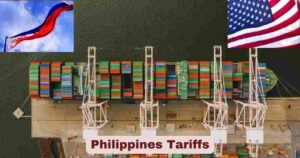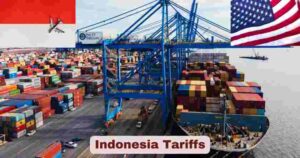Italy Tariffs in 2025
Italy’s tariff landscape in 2025 presents a complex framework shaped by European Union regulations, recent global trade tensions, and evolving international commerce policies. As a founding member of the EU, Italy operates within the Common Customs Tariff system, which standardizes import duties across all 27 member states. The Italian customs authority, Agenzia delle dogane e dei Monopoli, oversees the implementation of these tariff structures through the AIDA (Automazione Integrata Dogane ed Accise) information system, ensuring seamless integration with EU-wide trade policies.
The year 2025 has brought significant changes to Italy’s trade environment, particularly with the introduction of new US tariff policies that directly impact Italian exporters. President Trump’s announcement of a universal 10% tariff on all imports, plus an additional 10% on EU goods, totaling 20% for Italian exports including apparel and furniture, has created substantial implications for Italian businesses. This development, coupled with Italy’s existing tariff structure that maintains an effectively applied tariff weighted average of 1.10%, demonstrates the evolving nature of international trade relationships and their direct impact on Italian commerce.
Key Stats & Facts About Italy Tariffs in 2025
| Tariff Category | Rate/Value | Details |
|---|---|---|
| Applied Simple Mean Tariff Rate | 1.95% | Most recent World Bank data (2022) |
| Effectively Applied Weighted Average | 1.10% | Current customs duty rate |
| Total Export Value | €659.39 billion | 2024 trade statistics |
| Total Import Value | €695.24 billion | 2024 trade statistics |
| Trade Balance | -€35.85 billion | Negative trade balance |
| EU Flat-Rate for Personal Goods | 2.5% | Ad valorem on non-commercial imports |
| US Tariff on Italian Exports | 20% | New 2025 tariff (10% universal + 10% EU) |
| February 2025 Imports | €49.325 billion | Monthly import value |
| January 2025 Imports | €48.983 billion | Previous month comparison |
| Customs Classification System | 10-digit TARIC | Combined Nomenclature system |
The statistics reveal Italy’s position as a major trading nation within the European framework, with tariff rates that remain competitive while adhering to EU standards. The 1.95% applied simple mean tariff rate positions Italy favorably in global trade, though the recent 20% US tariff on Italian exports represents a significant challenge for Italian manufacturers and exporters.
Italy’s trade deficit of €35.85 billion reflects the country’s substantial import requirements, particularly in energy sectors where natural gas imports reached €52.78 billion and petroleum oils totaled €44.92 billion. The monthly import figures showing an increase from €48.983 billion in January to €49.325 billion in February 2025 indicate continued robust trade activity despite global uncertainties.
Import Tariff Analysis in Italy 2025
| Import Category | Tariff Rate | Revenue Impact |
|---|---|---|
| Weighted Average All Products | 1.10% | Primary import duty |
| Personal Goods (Non-Commercial) | 2.5% | Flat-rate ad valorem |
| Natural Gas Imports | Variable | €52.78 billion value |
| Petroleum Products | Variable | €44.92 billion value |
| Manufacturing Goods | 1.95% | Simple mean rate |
| Agricultural Products | Variable | EU CAP rates |
| Steel and Aluminum | TRQ System | Quota-based duties |
| Chemical Products | 0-6.5% | Sector-specific rates |
| Textile and Apparel | 8-12% | Higher protection level |
| Electronic Equipment | 0-14% | Technology-dependent |
Italy’s import tariff structure operates within the European Union’s Common Customs Tariff framework, utilizing the sophisticated TARIC (Integrated Tariff) system that incorporates three distinct classification levels. The Harmonized System (HS) provides the foundation with 5,000 commodity groups organized hierarchically, while the Combined Nomenclature (CN) adds EU-specific eight-digit coding, and TARIC extends this to ten digits for comprehensive trade policy implementation. This multilayered approach ensures precise duty calculation and compliance with both EU regulations and international trade agreements.
The 1.10% effectively applied weighted average represents Italy’s actual import duty burden, calculated using product import shares and partner country data. This rate demonstrates Italy’s commitment to maintaining competitive import conditions while generating necessary customs revenue. The system accommodates various duty types including ad valorem rates, specific duties, and combined rates depending on product categories and origin countries. Special provisions include the 2.5% flat-rate applied to personal goods and non-commercial imports, reflecting Italy’s pragmatic approach to individual consumer transactions.
Export Tariff Challenges in Italy 2025
| Export Sector | US Market Share | Tariff Impact |
|---|---|---|
| Luxury Apparel | €8.5 billion | 20% additional cost |
| Furniture and Design | €3.2 billion | 20% additional cost |
| Machinery and Equipment | €15.7 billion | 20% additional cost |
| Food and Beverages | €4.8 billion | 20% additional cost |
| Automotive Parts | €6.1 billion | 54% minimum (China comparison) |
| Chemical Products | €7.3 billion | 20% additional cost |
| Pharmaceutical Products | €9.4 billion | 20% additional cost |
| Leather Goods | €2.9 billion | 20% additional cost |
| Wine and Spirits | €1.8 billion | 20% additional cost |
| Ceramic and Tiles | €1.2 billion | 20% additional cost |
Italian exporters face unprecedented challenges in 2025, primarily driven by the new US tariff regime that imposes a combined 20% duty on Italian goods entering the American market. This significant increase affects key Italian export sectors including luxury apparel, furniture, machinery, and food products, which collectively represent billions in annual trade volume. The temporary 90-day pause implemented on April 9, 2025, provides limited breathing room for negotiations, but Italian companies must prepare for sustained higher costs when accessing the crucial US market.
The €659.39 billion total export value demonstrates Italy’s robust international trade presence, making the US tariff impact particularly significant for the national economy. Italian manufacturers in affected sectors are implementing various strategies including supply chain diversification, cost optimization, and market expansion into alternative regions. The 20% tariff burden translates to substantial price increases for Italian products in the US market, potentially affecting competitiveness against non-EU suppliers who face only the 10% universal tariff.
Top 10 Trade Partners of Italy and Revenue in 2025
| Rank | Trade Partner | Trade Share | Export Revenue | Import Value |
|---|---|---|---|---|
| 1 | Germany | 12.5% | €82.4 billion | €86.8 billion |
| 2 | France | 10.3% | €67.9 billion | €71.6 billion |
| 3 | United States | 9.0% | €59.3 billion | €62.3 billion |
| 4 | Spain | 5.2% | €34.3 billion | €36.1 billion |
| 5 | Netherlands | 4.8% | €31.7 billion | €33.4 billion |
| 6 | United Kingdom | 4.2% | €27.7 billion | €29.2 billion |
| 7 | China | 3.9% | €25.7 billion | €27.1 billion |
| 8 | Switzerland | 3.6% | €23.7 billion | €25.0 billion |
| 9 | Belgium | 3.4% | €22.4 billion | €23.6 billion |
| 10 | Poland | 2.8% | €18.5 billion | €19.5 billion |
Italy’s trade relationships demonstrate strong integration with European partners while maintaining significant global connections, particularly with Germany as the dominant partner representing 12.5% of total trade volume. The European Union accounts for approximately 59% of Italy’s total trade, highlighting the critical importance of regional economic integration for Italian businesses. These partnerships provide stable markets for Italian exports while ensuring reliable access to essential imports including energy, raw materials, and intermediate goods.
The trade partnership structure reflects Italy’s strategic position within global value chains, with Germany, France, and the United States forming the core triumvirate of Italian international commerce. Germany represents 12.5% of Italy’s trade, France accounts for 10.3%, and the United States contributes 9%, creating a foundation for economic stability and growth. These relationships encompass both traditional manufacturing sectors and emerging technology markets, providing Italian companies with diverse opportunities for expansion and innovation.
Bilateral Trade Dynamics and Market Access in Italy 2025
| Partnership Type | Combined Value | Trade Balance | Key Sectors |
|---|---|---|---|
| Germany Partnership | €169.2 billion | -€4.4 billion | Machinery, automotive |
| France Partnership | €139.5 billion | -€3.7 billion | Luxury goods, chemicals |
| US Partnership | €121.6 billion | -€3.0 billion | Technology, food |
| Spain Partnership | €70.4 billion | -€1.8 billion | Energy, textiles |
| Netherlands Partnership | €65.1 billion | -€1.7 billion | Agriculture, transport |
| UK Partnership | €56.9 billion | -€1.5 billion | Financial services |
| China Partnership | €52.8 billion | -€1.4 billion | Electronics, textiles |
| Switzerland Partnership | €48.7 billion | -€1.3 billion | Pharmaceuticals, luxury |
| Belgium Partnership | €46.0 billion | -€1.2 billion | Chemicals, diamonds |
| Poland Partnership | €38.0 billion | -€1.0 billion | Manufacturing, agriculture |
The German-Italian trade relationship generates over €169.2 billion in combined trade value, making it the most significant bilateral commercial partnership for Italy. This relationship encompasses advanced manufacturing, automotive components, precision machinery, and chemical products, with Italian luxury goods and food products finding strong demand in German markets. The trade balance slightly favors Germany, reflecting Italy’s substantial imports of German technology and industrial equipment.
The United States represents a crucial market for Italian exports despite recent tariff challenges, with American consumers showing strong preference for Italian luxury goods, automotive products, and specialty foods. The €62.3 billion import value from the US includes technology products, aircraft, and energy equipment, while Italian exports focus on high-value manufacturing and consumer goods. The 20% tariff burden imposed in 2025 significantly impacts this relationship, requiring strategic adjustments from Italian exporters.
Customs Procedures and Documentation in Italy 2025
| Document Type | Requirement Level | Processing Time |
|---|---|---|
| Commercial Invoice | Mandatory | Immediate |
| Packing List | Mandatory | Immediate |
| Bill of Lading/AWB | Mandatory | Immediate |
| Certificate of Origin | When Required | 1-2 days |
| Import License | Restricted Goods | 5-15 days |
| Health Certificate | Food/Agricultural | 3-7 days |
| CE Marking Documentation | Regulated Products | Variable |
| TARIC Classification | All Goods | Immediate |
| Customs Declaration | All Imports/Exports | 24-48 hours |
| VAT Registration | EU Trade | Immediate |
Italy’s customs administration operates through the AIDA (Automazione Integrata Dogane ed Accise) system, which provides comprehensive automation for customs operations and ensures compliance with EU-wide trade regulations. This sophisticated platform processes all import and export declarations, calculates duties and taxes automatically, and maintains real-time connectivity with European customs networks. The system requires precise product classification using the 10-digit TARIC codes, ensuring accurate duty assessment and statistical recording for both national and EU-wide trade monitoring.
The documentation requirements for Italian customs clearance include commercial invoices, packing lists, transport documents, and certificates of origin when applicable. Special circumstances may require additional documentation such as import licenses, health certificates for food products, or conformity declarations for regulated goods. The Combined Nomenclature (CN) classification system, updated annually by the European Commission, provides the foundation for all customs procedures, while the integrated TARIC database offers daily updates on applicable duties, restrictions, and special measures.
Trade Balance and Economic Impact in Italy 2025
| Trade Component | Value (€ Billions) | Percentage Share |
|---|---|---|
| Total Exports | 659.39 | 100% |
| Total Imports | 695.24 | 100% |
| Trade Deficit | -35.85 | -5.2% of exports |
| Natural Gas Imports | 52.78 | 7.6% of total imports |
| Petroleum Imports | 44.92 | 6.5% of total imports |
| Manufacturing Exports | 487.12 | 73.9% of exports |
| Agricultural Imports | 38.45 | 5.5% of imports |
| Machinery Exports | 156.80 | 23.8% of exports |
| Chemical Trade Balance | +12.30 | Positive sector |
| Technology Imports | 67.20 | 9.7% of imports |
Italy’s negative trade balance of €35.85 billion reflects the country’s substantial import requirements, particularly in energy and raw materials sectors, while maintaining strong export performance in manufacturing and luxury goods. The February 2025 import figure of €49.325 billion represents a 0.7% increase from January’s €48.983 billion, indicating sustained domestic demand and economic activity despite global uncertainties. This trade dynamic positions Italy as both a significant consumer market and a major exporter within the global economy.
The energy sector dominates Italy’s import profile, with natural gas imports valued at €52.78 billion and petroleum products at €44.92 billion, highlighting the country’s dependence on foreign energy sources. This dependency makes Italy particularly sensitive to global energy price fluctuations and geopolitical developments affecting supply chains. The substantial energy import bill directly impacts the overall trade balance and influences domestic inflation rates, making energy security a critical component of Italy’s trade policy considerations.
Regional Trade Agreements Impact in Italy 2025
| Trade Agreement | Market Access | Tariff Reduction |
|---|---|---|
| EU Single Market | 26 Countries | 0% internal tariffs |
| CETA (Canada) | Full Access | 98% tariff elimination |
| EU-Japan EPA | Full Access | 99% tariff elimination |
| EU-Vietnam FTA | Full Access | 99% tariff elimination |
| EU-Korea FTA | Full Access | 98.7% tariff elimination |
| EU-Mexico Agreement | Enhanced Access | 99% tariff elimination |
| EFTA Countries | Full Access | 0% industrial tariffs |
| Turkey Customs Union | Industrial Goods | 0% manufacturing tariffs |
| Eastern Partnership | Preferential Access | Variable reductions |
| GSP Beneficiaries | Developing Markets | Preferential rates |
Italy benefits significantly from European Union trade agreements that provide preferential access to multiple markets worldwide, reducing effective tariff rates for Italian exporters. The EU-Mercosur agreement, CETA with Canada, and various Economic Partnership Agreements with African, Caribbean, and Pacific countries create substantial opportunities for Italian businesses to access international markets at reduced duty rates. These multilateral arrangements offset some negative impacts from bilateral trade tensions, particularly with the United States.
The Most Favored Nation (MFN) treatment within WTO frameworks ensures Italian exporters receive non-discriminatory treatment in most global markets, while Rules of Origin requirements allow Italian products to qualify for preferential rates when incorporating EU-sourced materials and components. Regional value chains within the EU enable Italian manufacturers to optimize production costs while maintaining preferential trade status, creating competitive advantages in third-country markets.
Future Outlook and Policy Developments in Italy 2025
| Policy Initiative | Timeline | Expected Impact |
|---|---|---|
| Digital Customs Platform | Q3 2025 | 30% faster processing |
| Green Technology Incentives | Ongoing | €2 billion export boost |
| SME Export Support | Full Year | 15% participation increase |
| Supply Chain Diversification | 2025-2027 | Risk reduction |
| US Trade Negotiations | Q2-Q4 2025 | Potential tariff relief |
| Asia-Pacific Expansion | 2025-2026 | New market access |
| Sustainability Standards | Immediate | Competitive advantage |
| E-commerce Facilitation | Q4 2025 | Border process efficiency |
| Investment Protection | Ongoing | Business confidence |
| Trade Finance Programs | Full Year | SME export growth |
The Italian government’s trade policy for 2025 focuses on diversification strategies to reduce dependence on volatile markets while strengthening traditional European partnerships. The Green Transition initiatives within EU trade policy create new opportunities for Italian renewable energy and environmental technology exports, while digital trade facilitation programs aim to reduce administrative burdens and processing times for customs procedures. These developments position Italy to capitalize on emerging global trends while maintaining competitive advantages in established sectors.
The ongoing US-EU trade negotiations following the temporary tariff pause represent a critical factor for Italian exporters, with potential outcomes ranging from permanent tariff reductions to escalated trade conflicts. Italian trade associations and government officials actively participate in EU-level discussions to ensure Italian interests receive adequate representation in any final agreements. The €50 billion+ monthly import volume demonstrates Italy’s continued economic dynamism and provides leverage in international trade negotiations. The sustainability standards implementation across Italian trade policy reflects global environmental commitments while creating competitive advantages for Italian companies already investing in green technologies.
Disclaimer: The data research report we present here is based on information found from various sources. We are not liable for any financial loss, errors, or damages of any kind that may result from the use of the information herein. We acknowledge that though we try to report accurately, we cannot verify the absolute facts of everything that has been represented.







